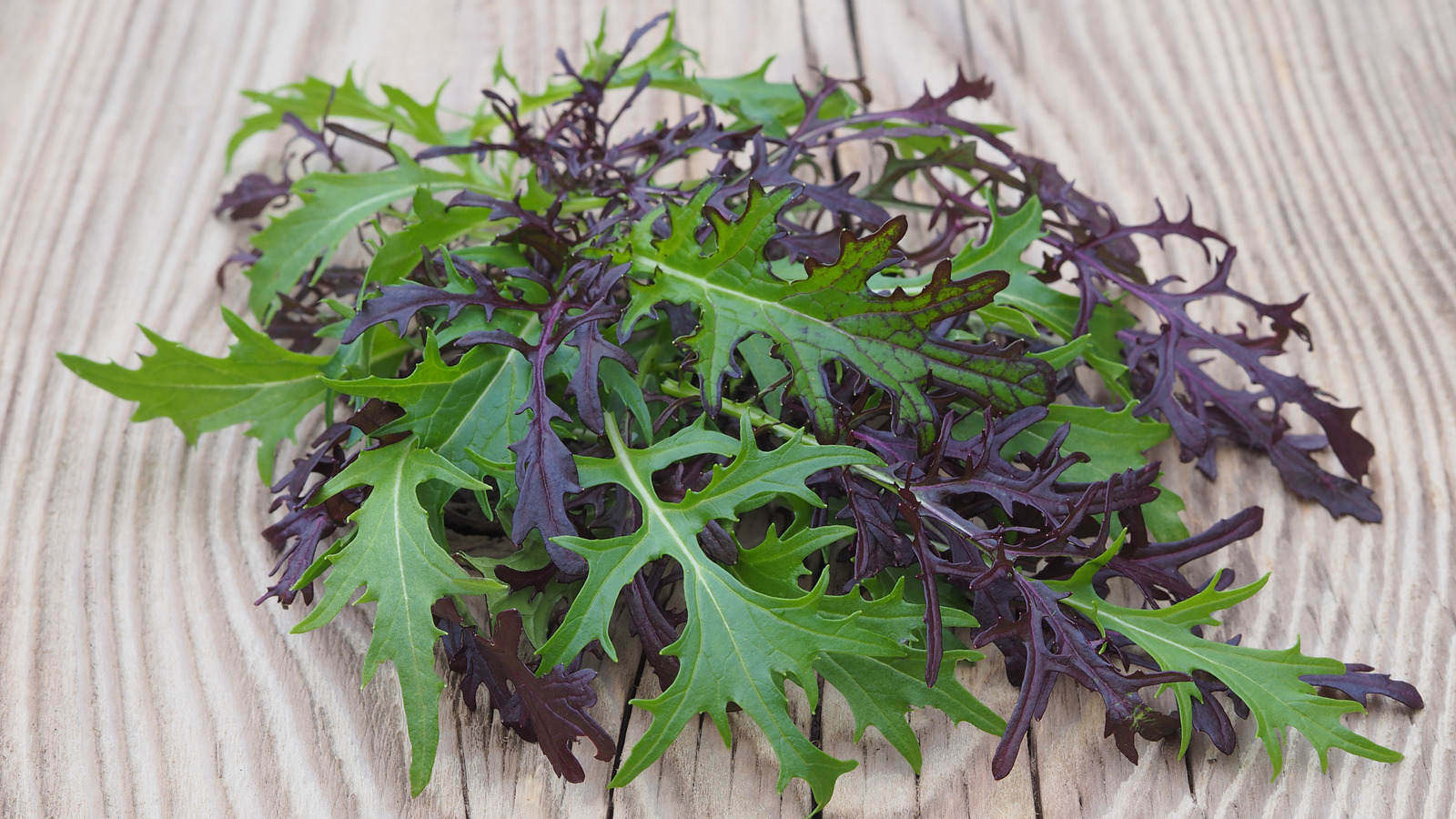Mizuna beni houshi is a special type of mizuna, an Asian green vegetable that has been grown in Japan for centuries. With its vivid purple stems and green, jagged leaves, beni houshi mizuna is both beautiful to look at and delicious to eat.
In this article we’ll cover everything you need to know about this unique heirloom vegetable including
- What is mizuna? An overview of the mizuna plant
- What makes beni houshi mizuna special?
- How to grow mizuna beni houshi
- How to harvest and use beni houshi mizuna
Let’s dive in and learn all about this colorful and healthy Japanese green!
What is Mizuna?
Mizuna, also known as spider mustard, Japanese mustard, or California peppergrass, belongs to the Brassicaceae family along with bok choy, broccoli, cabbage, and more. It likely originated in China but has been grown in Japan since the mid-19th century
The name “mizuna” translates to “water greens” in Japanese, referring to the fact that it was traditionally grown in flooded fields.
There are around 16 different varieties of mizuna, which vary slightly in texture, color, and flavor. In general, mizuna has long, slender white stems and delicate, deeply serrated green leaves that grow in a rosette shape.
All types of mizuna are nutrient-dense, providing vitamin C, vitamin A, calcium, anthocyanins, and other beneficial plant compounds. The leaves have a pleasant, mildly spicy, peppery flavor.
In addition to being extremely healthy, mizuna is versatile and easy to grow. It thrives in both hot and cold climates, making it a great choice for gardens across the U.S.
What Makes Mizuna Beni Houshi Special?
Beni houshi is one of the most unique and eye-catching varieties of mizuna. As the name suggests, it features vivid reddish-purple stems contrasting with delicate green leaves.
In addition to its beautiful bi-colored appearance, beni houshi offers some special benefits:
-
Mild, balanced flavor – While all mizuna has a peppery bite, beni houshi is considered one of the mildest tasting varieties. When eaten raw, the leaves have a gentle mustardy kick that isn’t overpowering.
-
Crunchy, sweet stems – The purple stems have a pleasing texture and sweetness. They add an extra dimension of flavor and crunch to dishes.
-
Rich in anthocyanins – The purple pigment comes from antioxidant compounds called anthocyanins. These beneficial plant chemicals have anti-inflammatory effects and promote overall health.
How to Grow Mizuna Beni Houshi
Growing mizuna beni houshi is simple with a little care and attention. Here are some tips:
-
Planting – Direct sow seeds 1⁄4 inch deep in early spring or late summer. Space rows 12-18 inches apart and thin seedlings to 6 inches apart.
-
Sunlight – Grow in full sun, ideally with at least 6 hours of direct sunlight per day.
-
Soil – Beni houshi prefers nutrient-rich, well-draining soil. Amend with compost if needed.
-
Watering – Keep soil consistently moist, providing around 1 inch of water per week. Add mulch to help retain moisture.
-
Temperature – Thrives in cool weather. Use row covers or shade cloth if temperatures exceed 80°F.
-
Maturity – Mizuna grows rapidly, ready to harvest in as little as 30-50 days. Cut outer leaves rather than uprooting whole plants.
-
Second harvest – Allow beni houshi to re-grow after the first cutting for a second harvest.
Follow these tips and you’ll be rewarded with a vibrant patch of beni houshi mizuna!
Harvesting and Enjoying Beni Houshi Mizuna
One of the best parts of growing mizuna beni houshi is figuring out how to highlight its lively colors and flavors. Here are some serving suggestions:
-
Add small leaves raw to salads, wraps, and spring rolls. The peppery kick balances milder greens.
-
Mature mizuna works great cooked briefly in soups, stir-fries, and noodle dishes.
-
Pickle the stems and leaves for a fun crunchy garnish.
-
Grill or pan-fry rolls of mizuna leaves for a beautiful char.
-
Infuse olive oil with chopped beni houshi to make flavored oils and dressings.
-
Garnish everything from omelets to fish fillets with small beni houshi leaves.
With its incredible colors and balanced, peppery flavor, beni houshi mizuna is a unique heirloom green that’s sure to liven up your cooking. It’s also packed with antioxidants and easy to grow in most climates.
Hopefully this article gave you all the key details on mizuna beni houshi – from its vivid appearance to its growth needs to culinary uses. Try adding this Japanese heirloom to your garden this season for a burst of color and flavor!

Review Baker creek Mizuna Beni Houshi seeds
FAQ
What is Beni Houshi mizuna?
‘Beni Houshi’ and ‘Japanese Pink’ mizuna have purple stems and green leaves. ‘Japanese Red Mustard’ mizuna has green stems and dark purple leaves. All varieties prefer well-drained soil that is rich in organic matter. Their seeds are best sown directly into the garden.
What is the flavor of mizuna?
What are the side effects of Mizuna greens?
Possible side effects
Mizuna should be eaten moderately by individuals prone to kidney stones. The vegetable contains oxalates which may increase the risk of kidney stone.
Is mizuna the same as arugula?
A cross between arugula and mustard, mizuna also has a mild peppery taste. They have feathery serrated edges and have a glossy surface that make the green wonderfully decorative. The plant is most popular in Japan.
